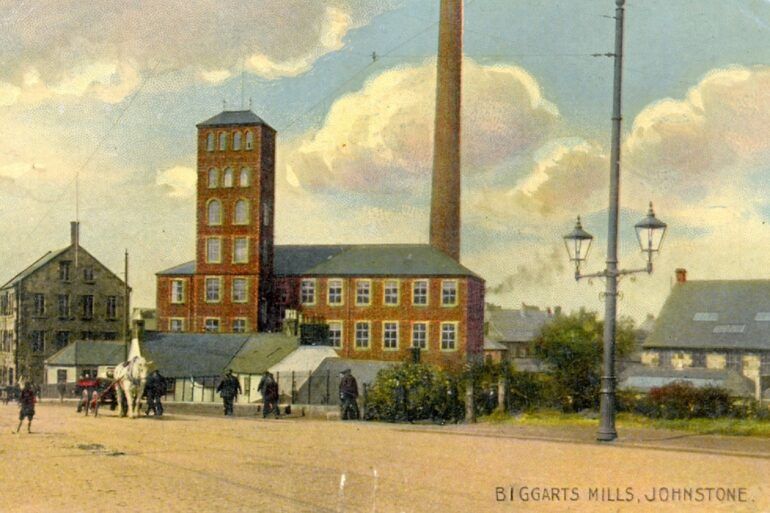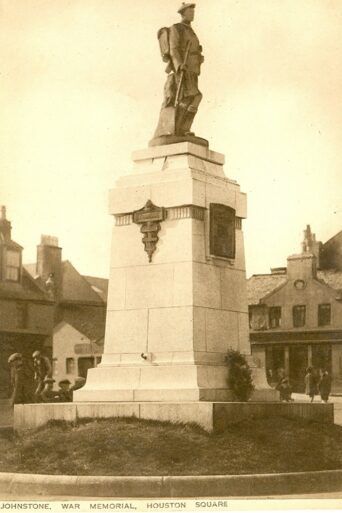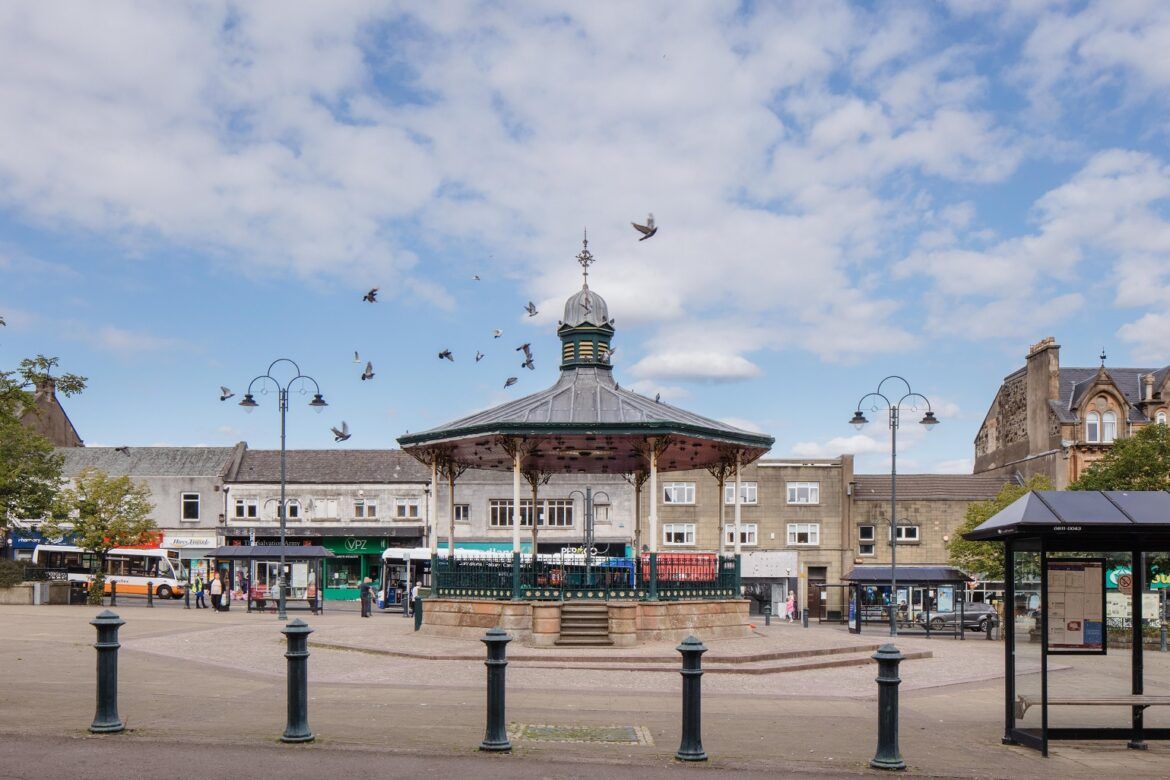First envisioned by its laird, John Houston, in 1782, the owner of the nearby Easter Cochrane estate– soon rechristened as Johnstone Castle– would turn his vision of a new, prosperous town into a reality.
Based on an initial outline of five streets and a place of worship that would eventually become the town landmark known today as Johnstone High Parish Church, Houston’s plan would soon begin to take shape. By the end of the year, his proposed plans attracted new settlers and within a decade, its humble beginnings as a hamlet consisting of 50 homes would soon snowball into a thriving community with over 1500 inhabitants.
Experiencing growth year over year, Johnstone’s location and ample access to nearby countryside soon made it into a desirable place to live and this trend would only persist as the years rolled in.
For most locals, the driving force behind the decision to flock to this budding town was its flourishing industry. Not unlike many of the surrounding settlements, it was the thread trade that would energise its economy and bring much needed work to the region.
Built by textile merchant Robert Corse in 1782, the opening of the Johnstone Old Cotton Mill would act as the starting pistol for an entire network to spring up. By 1784, it would be joined by the arrival of town visionary George Houston’s old mill before the owners of the nearby Calderpark Cotton Mill in Lochwinnoch would plant their own flag in the town with Cartside.
Between Corse and Houston’s sites alone, 28 tons of water per minute from the nearby Black Cart would power their thriving operations and with the town quickly becoming a hotbed for manufacturing, the Hag Mill would begin to draw from this same body of water from 1794.
Venturing downstream towards Linwood Dam, the Peockland Burn would keep things ticking over at the smaller, but no less profitable Bank Top (1792) and Montgomeries Mills until they eventually converted to stream power.
Over the course of their time in operation, it was believed that the mills provided employment to over 3000 people. At the dawn of the 19th century, both the town’s renown and number of inhabitants continued to skyrocket and by 1841, it played host to a grand total of 16 mills and 7000 people.
To solely touch upon the thread aspect of the town’s exports would overlook the fact that at the the height of the industrial revolution, Johnstone played host to a coal mine, a paper mill and various other textile factories. As the 19th century progressed, it became known for its production of machine tools, iron, brass, chemicals and paper.
Despite the fact that business was booming and Houston’s original plans had been far exceeded, Johnstone’s infrastructure proved insufficient to house all of its workforce and by 1830, homes were being hastily erected to meet demand. In some cases, even in the pre-existing back-gardens of other houses.
Then, in 1860, a temporary solution arrived in the form of tenement housing but as people continued to descend upon Johnstone in order to find employment, the overcrowding would remain a puzzle for local authorities to solve.
As the town’s good financial fortunes continued into the 20th century, the local council purchased nearby Cartside House in an attempt to put this issue to bed once and for all.
Much like the laird before them, the council only intended to build a modest 220 houses across the estates of Cartside and the nearby Linn House. However this 32-acre site, which would become the Howwood Road scheme, would only be the beginning and throughout the 50’s and 60’s, long standing neighbourhoods such as Corseford, Spateston, Cochrane Castle and Johnstone Castle would be greenlit and built.
Ambitious as this may have seemed at the time, it was by no means surplus to requirements and by 1970, Johnstone’s population reached its peak at over 23,000.
Aside from its continued expansion and years of prosperity as a centre for industry, Johnstone also has a rich lineage as a breeding ground for footballing talent. A presence in the town since the formation of Newfield Park’s Johnstone FC in 1878 (the team would be dissolved in 1927), generations of kids have honed their skills in its parks, streets and back gardens. Although by no means an exhaustive list, Johnstone’s footballing exports include long-tenured international goalkeeper Jim Leighton as well as Tommy Bryce, Tommy Turner, John “Dixie” Deans and history-making defender William Clunas, who played in the first ever clash between Scotland and “the auld enemy” of England at Wembley stadium.
Today, this storied legacy is kept alive by West Of Scotland League side and two-time Junior Cup winners Johnstone Burgh FC.



